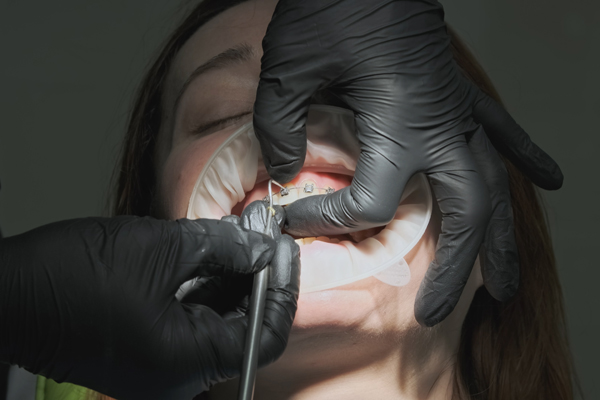Orthodontic FAQs [Guide to Invisalign®]

For a discreet way to fix poor teeth alignment, many patients choose the Invisalign® system. Before clear aligners like these were introduced, many adults would leave teeth alignment issues unfixed, since treatment required them to have highly visible metal braces in their mouth for up to two years. Thanks to Invisalign®, patients can now improve the alignment of teeth without compromising the way the smile looks with a bunch of metal brackets.
Popular questions patients ask
Here are answers to common questions people who are considering this teeth alignment treatment often ask:
1. What is it?
The process of getting teeth straightened with Invisalign® involves wearing removable clear aligners that gradually push the patient's teeth to a better alignment similarly to the way traditional braces do. However, there are no metal brackets or wires with this system
An aligner looks similar to a mouthguard used for sports. It fits tightly on teeth, applying pressure on them. These aligner trays are made with a patented thermoplastic called SmartTrack. The aligners are approved by the FDA, and they do not contain any gluten, latex or BPA.
2. Why choose Invisalign®?
One of the primary benefits of Invisalign® aligners is that they are virtually impossible to detect when worn. Another noteworthy benefit is how they can be easily removed when it is time to floss, brush, eat or drink. Users also get a more comfortable experience as there are no brackets or wires that can irritate the soft tissues in the mouth.
3. Who is Invisalign® for?
These aligners are great for adults and teenagers who are looking for a more subtle way to straighten teeth. Thanks to improvements to the original design, these devices can now be used to treat most common teeth alignment and bite problems.
Invisalign® is typically not recommended for children because the aligners need to be worn for at least 22 hours each day for the treatment to be effective. Young children tend to have a difficult time sticking to this schedule.
4. How long do treatments last?
Treatment periods can last anywhere from six to 24 months. More severe teeth alignment issues may require treatment beyond two years. During the course of the treatment, patients are required to wear thr devices for at least 22 hours each day. Not wearing the device as recommended or skipping a few days diminishes the results of the treatment.
5. Is it more comfortable than traditional braces?
This is another one of the benefits of going with Invisalign®. The way the treatment works, the patient gets several trays at the beginning. Each is worn for about two weeks before being replaced with one that applies more pressure. This gradual increase of the force applied to the person's teeth leads to a more comfortable experience for the wearer.
Get started with Invisalign®
Are you dealing with teeth alignment problems? A dental professional can guide you through the process of providing the discreet treatment you desire.
Request an appointment here: https://www.orthoisfun.com or call Henry Orthodontics at (910) 685-7395 for an appointment in our Pinehurst office.
Check out what others are saying about our services on Yelp: Read our Yelp reviews.
Recent Posts
Expert teeth straightening services can help you achieve your dream smile by bringing your teeth back into alignment. However, the advantages of doing so are far from just cosmetic. You also have various options when it comes to this approach, and each choice has its own advantages and disadvantages. So, you should know how expert…
Space maintainers are oral appliances primarily used on children to hold the space of baby teeth that fall out prematurely. There are a number of things that can lead to a child’s tooth falling out prematurely, like genetics, trauma, or tooth decay.Losing a baby tooth prematurely can have serious consequences. Milk teeth serve an important…
Considering invisible aligners? This method for straightening teeth that are crooked or crowded is growing in popularity. Over the years, the technology has advanced, which has allowed for aligners to be used to address more moderate orthodontic cases. Nowadays, more individuals are even choosing invisible aligners over the traditional route of metal braces. Why? Continue…
Orthodontic treatments are not just for children and teenagers. Adult braces are becoming increasingly popular due to advancements in orthodontic technology and the growing awareness of the importance of a healthy, well-aligned bite. For those considering adult braces, there are a few key things to remember before starting the journey toward a straighter smile. Misaligned…


